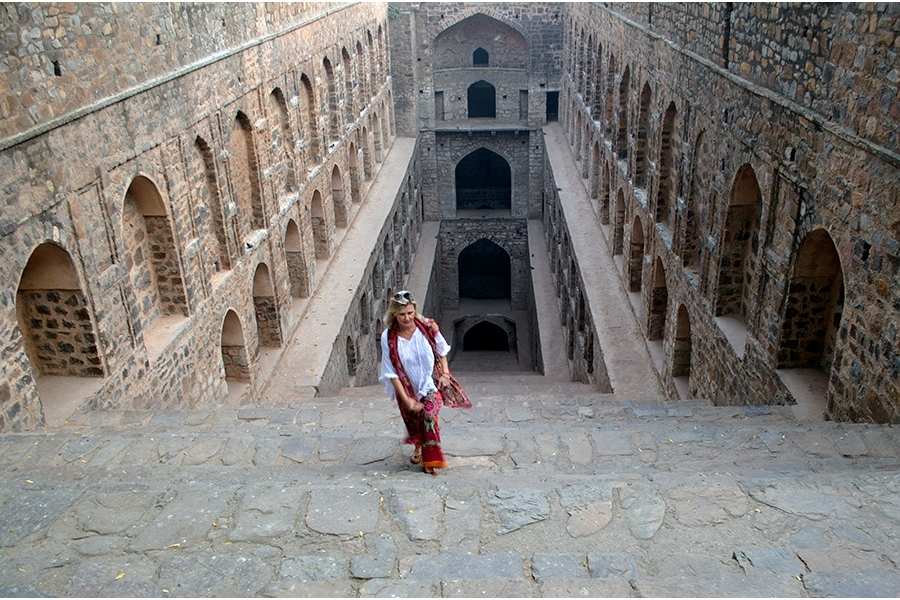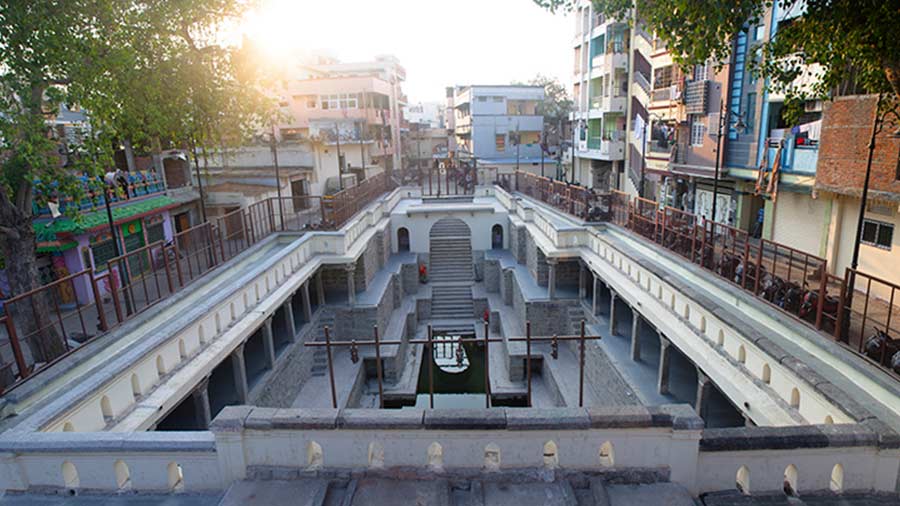It is often said that, “necessity is the mother of invention”, and the necessity of conservation of water, for the dry season, led to the construction of stepwells. Stepwells are wells in which the water is reached by a long flight of steps. They are often multi-storied subterranean structures. Stepwells are mostly found in the drier regions of the country and are mainly concentrated in northwest India, and even extends into Pakistan.
Several of these structures extend many levels below the ground and are complete with turrets, arched passages ways and recessed arches. Many of these stepwells have elaborate ornamentation, complete with intricate carvings. Apart from providing water, stepwells also served as a place for social gatherings and even religious ceremonies.
Stepwells usually consist of two parts: a vertical shaft from which water is drawn and the surrounding inclined subterranean passageways, chambers and steps that provide access to the well. Being below the ground, these galleries and chambers surrounding the wells provides a shelter during the hot summer months.
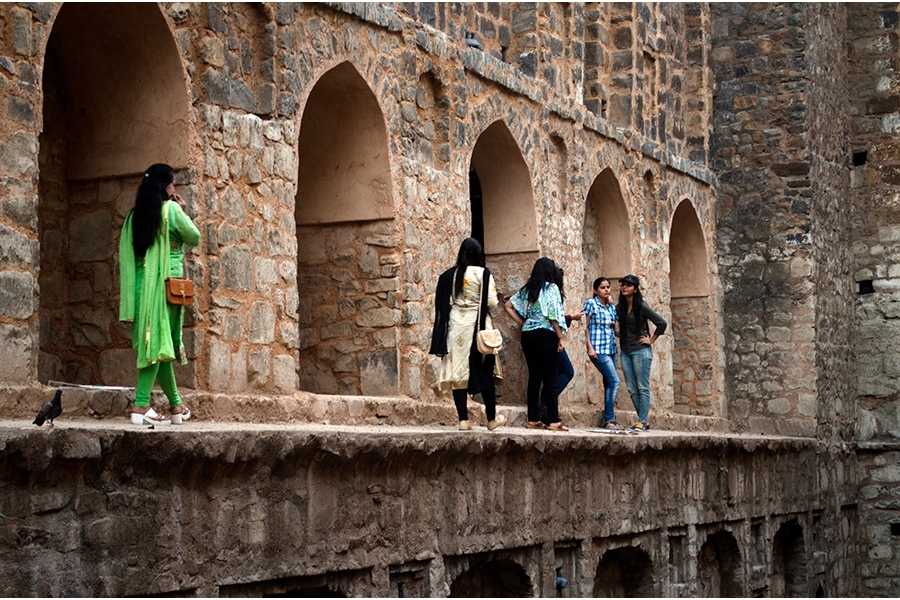
Ever since it was featured in Aamir Khan’s Bollywood blockbuster, ‘PK’, Agrasen Ki Baoli has become a favourite haunt for both domestic and foreign tourists
Delhi, although located on the banks of Yamuna River, suffers from long periods of water shortage. So, it’s no wonder that the city houses a number of stepwells, which are called baolis. Although Delhi has more than a dozen stepwells, the Agrasen Ki Baoli (also called Ugrasen Ki Baoli) stands out. It is one of the largest and definitely the most ornate stepwell in Delhi.
It is located at the very heart of Delhi, on Haley Lane, just off the Haley Road and behind the Banga Bhavan. It is located at a walking distance from popular tourist spots like Connaught Place and India Gate. For centuries, the ornate baoli did not feature in tourist maps of Delhi. In spite of its easy accessibility, it remained hidden among the modern tall buildings and the old bungalows of Lutyens’ Delhi.
But, things changed in December 2014. Agrasen Ki Baoli was featured in Aamir Khan’s Bollywood blockbuster, PK. Ever since, Agrasen Ki Baoli has become a favourite haunt for both domestic and foreign tourists, who have joined hands with curious locals in a desperate hunt for a ghost in the century-old baoli. Even the tourist guides cook up ghost stories.

A tourist clicks photos on the steps of the ‘baoli’
Agrasen ki Baoli gets its name from Raja Agrasen (or Raja Ugrasen) of Agroha, who also happens to be the progenitor of the Agarwal community. On the other hand, architectural features suggest that the baoli (or stepwell) was built during the Tughlaq Period (1321-1414) or Lodi Period (1451-1526).
Agrasen ki Baoli is made of rubble masonry. On the south-west corner of the baoli is a small mosque. Two of the arches of the triple-arched mosque stand to this day. On the northern end of the baoli is the circular well, measuring 8m in diameter. The top of the well is covered with an iron grill that prevents people from falling in. The well is connected to the rectangular passage by shafts and, in earlier days, as the water rose in the well, it filled the passage from the base to the top. On the southern side is a flight of 108 steps descending to the base of the baoli.
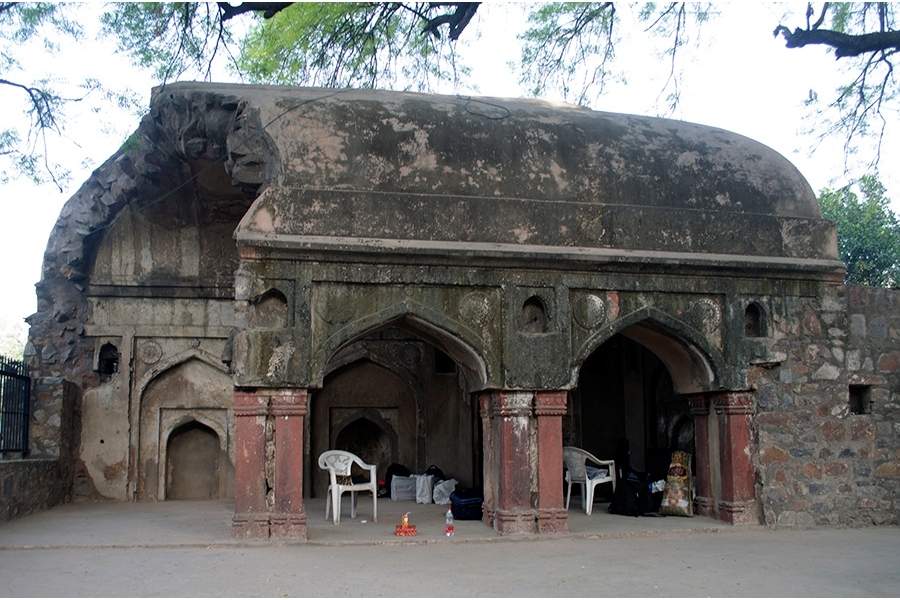
On the south-west corner of the ‘baoli’ is a small mosque
The steps, on either side, are flanked by thick walls and descend four levels below the ground. The top two levels each contains two layers of recessed arches. The upper arches have shallow recesses and are probably for ornamental purpose. The lower ones are deeper, allowing people to sit and enjoy the ambiance of the stepwell. There are also rooms and passageways inside Agrasen ki Baoli, but sadly, they are kept under lock and key and are out of reach of visitors and tourists.
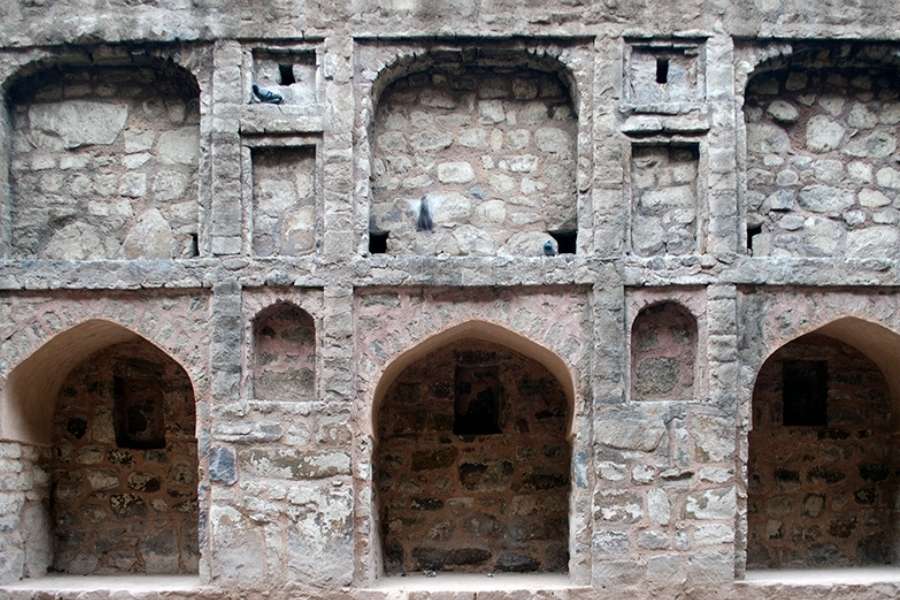
The carved arches on the side wall with shallow and deep recesses
Now, Agrasen ki Baoli serves as the living quarters of hundreds of bats. As visitors descend down the stairway, their presence can be felt by the ruckus created by them. The baoli also serves as the home for pigeons, and if you are lucky, you can watch them fly in groups above the baoli.
